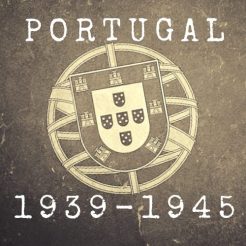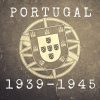Maria Terceiro
(Portugal)
Captain:
Type: Fishing boat
Tonnage:
Owner:
Homeport: Vila Real de Santo António
Built:
Event: Rescued the crew of the "Empire Warrior" sunk by airplanes near Vila Real de Santo António.
On the morning of June 19, 1941, the crew of the fishing boat "Maria 3º" was returning to the port of Vila Real de Santo António when, four miles from the coast, the men realized that the British ship "Empire Warrior" was sinking after being bombed by German planes. The 25 british were putting two whalers in the water to try to land.
The English captain, HE Maber, tried to persuade the trawler to tow his ship to port, but the latter refused and, according to the testimony of some Brits, because the owners were Italians, a community heavily settled in the south of the country at the time, especially in the canning industry. Another testimony says that the size of the Empire Warrior made the towing impossible for the fishing boat.
The Portuguese were, however, available to tow the whalers to Vila Real de Santo António which Maber accepted believing that their ship would take some time to sink and he would have time to rescue it, as there was usually a tugboat in port that could accomplish this task.
Arrived at the village he was told that the tugboat was in Lisbon and could not give any kind of assistance. The English captain also tried to use a dredger for the tow, but when it was finally ready to leave, news came that the ship was already sinking.
Shortly after the attack, the Portuguese Navy Sloop Afonso de Albuquerque arrived in the vicinity of the port, heading for the already empty Empire Warrior. A Portuguese officer was sent aboard, but the captain considered that the ship was already heavily trimmed and could not be towed safely.
The sinking of the "Empire Warrior"
The “Empire Warrior” had departed from Belfast, Ireland, on 1 June for Pomarão, in the Alentejo, Portugal, carrying 1400 tonnes of coal and 64 tonnes of general cargo. She was part of OG-64 convoy (bound for Gibraltar). She separated from the remaining ships on the 18th, sailing alone near to the Guadiana River where she anchored to spend the night.
Shortly after five in the morning the crew began to prepare the ship to sail up the Guadiana to Pomarão, when they saw three airplanes. First they thought they were Portuguese or Spanish, but then they formed and attacked, when they started to move towards to the river.
The airplanes machine gunned and bombed the ship. The bullets struck at several points on the deck, but did not hit anyone, as the bombs - a total of three in two distinct passages –hit the water near the hull breaking apart the seams between the steel plates allowing water to enter. Several pipes from the engine room and the steam system also broke, stopping the ship.
Two whalera were thrown into the water at the time the Portuguese fishing boat came, towing them to shore, where they tried to find whoever saved the ship, which sank around 9:10 AM.
Only one crewmember suffered minor injuries.
One of the three German Condor's might have been shot by the ship during one of the attacks.
"Empire Warrior"
(GB)
Capitão/ Captain: H. E. Maber
Tipo/Type: Merchant Steamer/ Vapor mercante
Tonelagem/ Tonnage: 1306
Proprietário/ Owner: Ministry of War Transport
Porto/ Homeport: London
Construção/Built:
Hamburg, Germany, 1921
Destino/ Fate:
Afundado na sequência de ataque por aviões alemães em 19 de junho de 1941. Salavaram-se os 25 tripulantes.
Resources:
- Archives: Arquivos Nacionais Torre do Tombo (PT); National Archives UK, Kew (GB); Arquivo Histórico da Marinha (PT); Arquivo Histórico do MNE (PT);
- Sites: wreksite.eu; wikipedia.org;
- Books & Publications : Shipping Company Losses of the second World War, Ian M. Malcolm; Navios da Marinha Portuguesa, datas 1939 a 1945;

